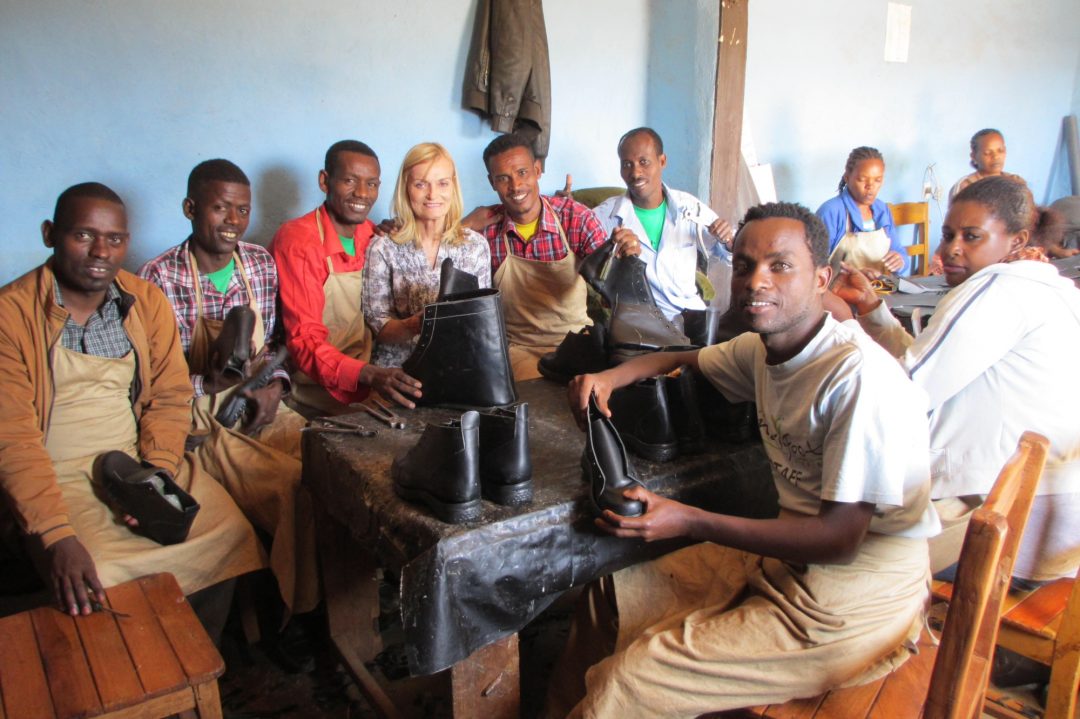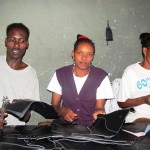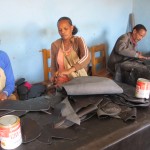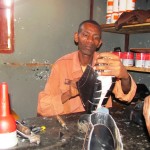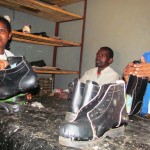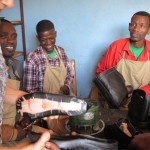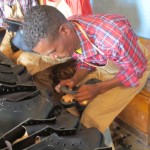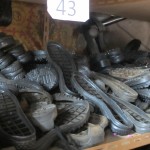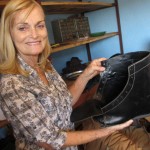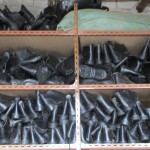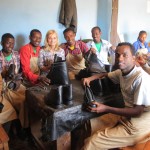Wearing shoes is a critical component of the healing process for people with mossy foot disease. But finding shoes that fit the patients’ swollen feet is often impossible. Making custom fit shoes is a key part of the ministry of the Mossy Foot Project in Ethiopia.
The process of making shoes begins with acquiring the necessary supplies in Addis Ababa. Purchases are made and brought back to Soddo and stored, and then used as needed. Typically, trips to replenish supplies happen every three months.
Designing the Shoes
Shoes for mossy foot patients are made from size 35 to 60. An initial design was prepared for each size. The shoe makers use a pattern placed on the leather and sketched around it with marking pen.
Shoes sizes from 35 to 48 use normal soles available in market. But soles for the sizes above 48 are not commercially available. The shoemakers design and make these soles from car tires for the extra large shoes.
Cutting and Gluing
After the design is placed on the leather, the cutting and gluing team cut the leather and glue layers together. They also make holes for the shoe laces and put shoe lace heads in the holes. The leather must dry 30 minutes before it can be sewn.
- Cutting Leather
- Cutting Leather for Shoes
Shaping the Shoe
In the next step, the leather parts are stretched onto a form to give shape for the shoe. Before the leather is put on the form, the form is covered with a plastic bag so that the finished shoe can be removed easily.
- Stretching the Shoe over the Form
- Shaping the Shoes
Attaching the Sole
After the leather is stretched over the form, the bottom edges are partially cut with blades and nailed tight to the form. A fiberboard product called Bontex is spread on the bottom of the leather as a stiffening agent with more glue. This also has to dry 30 minutes. At the same time, the correct size sole is also spread with glue, which is allowed to dry for 30 minutes.
After 30 minutes, both the leather and the sole are warmed for 5 minutes to make the glue sticky so that the sole and the leather bond tightly. After being warmed, the sole and the leather are put together and pressure is put on both so that they hold tight to each other.
- Fitting the Sole on the Shoe
- Soles ready to be attached to shoes
Completed Shoes
To ensure the sole and form are tightly bonded, they are not moved for twelve hours. After this time, the shoe is removed from the form, and shoe laces are added. The complete shoes are stored until they are needed.
- Sharon Daly holding a completed shoe
- Completed Shoes ready to be distributed
- Sharon Daly with the Mossy Foot Project Shoe Makers
